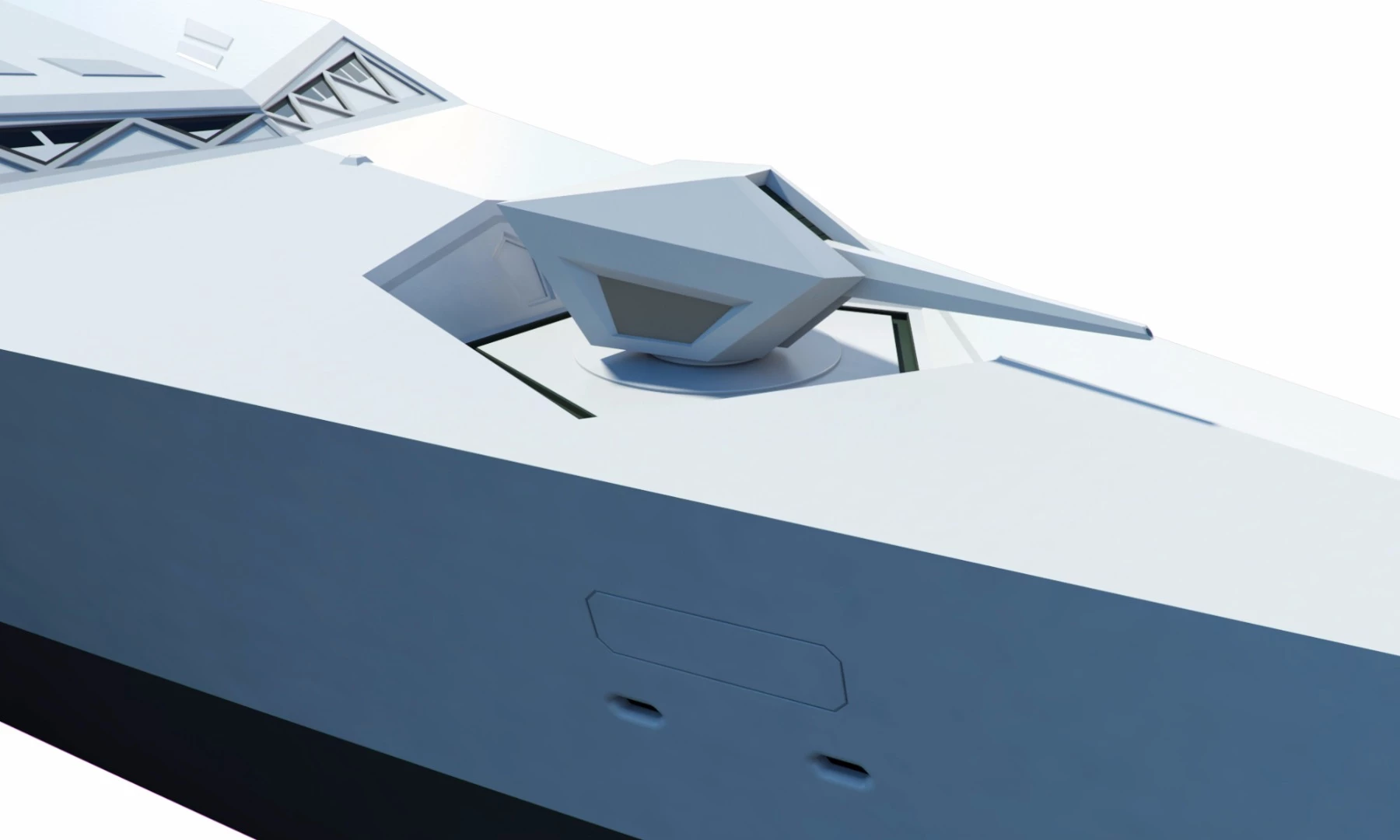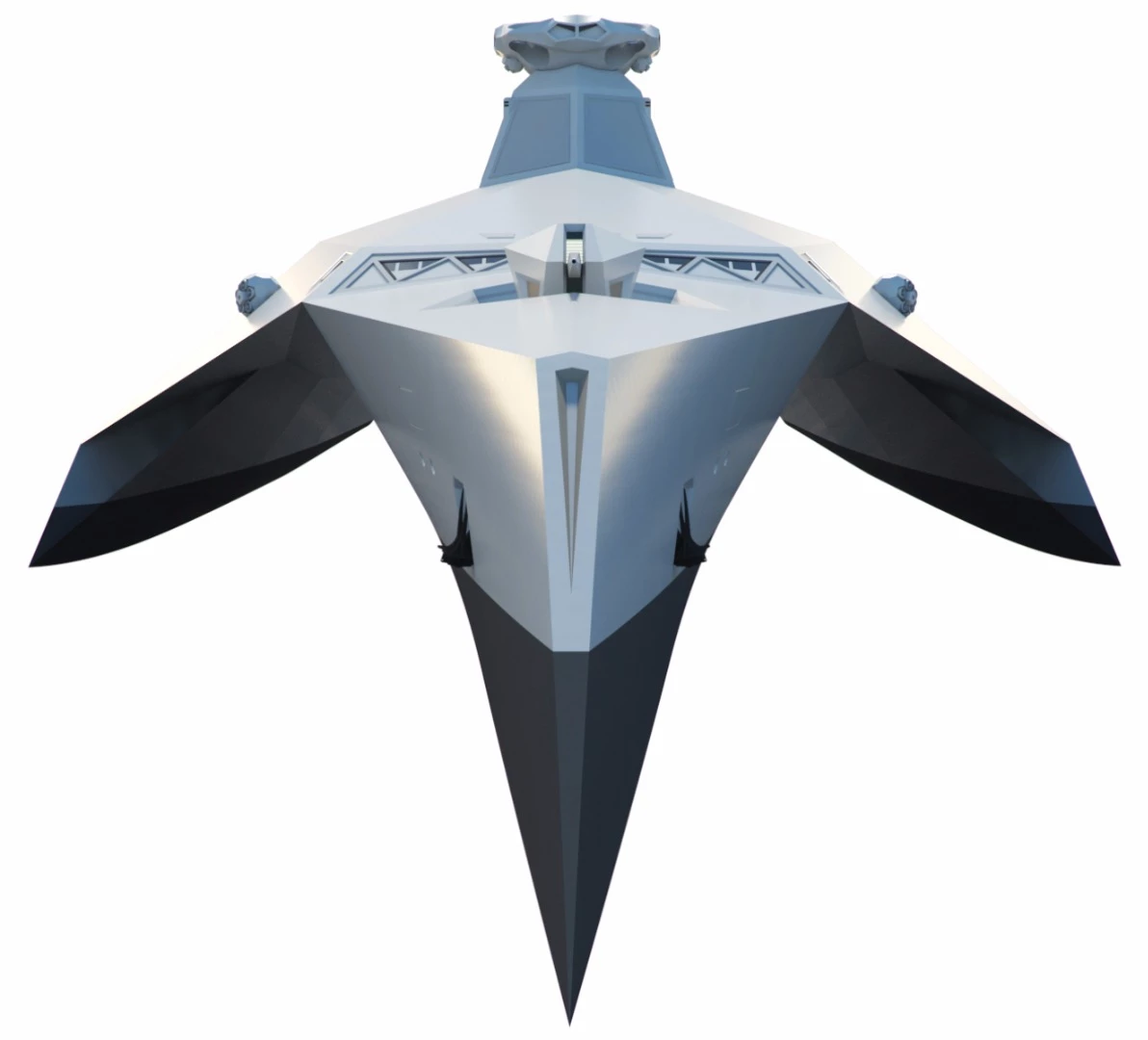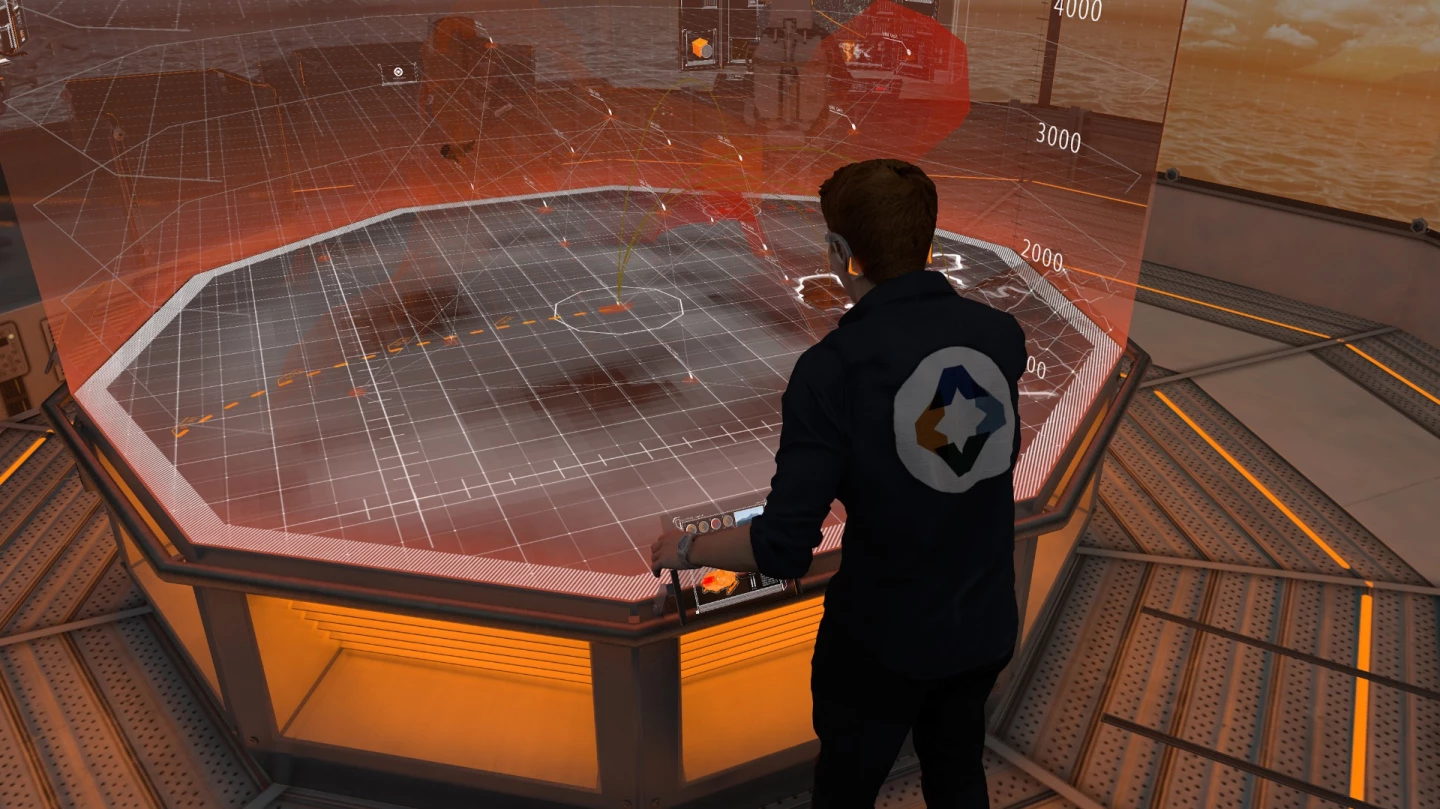In 1906, the battleship HMS Dreadnought entered into service with the Royal Navy. With her 12-in (305 mm) guns, high speed capabilities and other innovations, she rendered all other major warships obsolete. Inspired by this revolutionary design, the British Ministry of Defence (MoD) think-tank project Startpoint has unveiled its vision of a Navy vessel 35 years from now with the Dreadnought 2050 – an automated fusion-powered surface warship equipped with lasers, hypersonic missiles, a high-tech composite hull, and torpedoes that can travel at over 300 knots (345 mph, 555 km/h).
Dreadnought 2050, or T2050, stems from an informal challenge by the MoD and Royal Navy to young British scientists and engineers from UK naval electronic systems companies and the MoD as part of the Defence and Security Equipment International (DSEI) 2015 exhibition running from September 15 to 18. Its purpose is to stimulate imaginations and encourage thinking that pushes the limits of current engineering.
At the moment, the Dreadnought 2050 is a series of concept images that encapsulate many of the cutting-edge ideas that might make their way into a surface warship of the midcentury. If it ever is built, the Dreadnought 2050 would be 155 m (508 ft) long and 37 m (121 ft) abeam, which would make it about the same size as a Type 26 frigate.
However, that's where the resemblance would end. Dreadnought 2050 would have a streamlined stealth profile and ultra-strong acrylic hull that could be made translucent on command to provide better views. It would also be coated with graphene to reduce drag and stabilized by outrigger hulls in a trimaran configuration. All three hulls would have ballast tanks that could be flooded to make the ship partially submersible for stealth operations.
Propelled by silent electric water jets powered by either a fusion reactor or highly efficient turbines, the Dreadnought 2050 would cruise at 50 knots (57 mph, 92 km/h) and have an unlimited range, depending on its power source. A quadcopter hovering above the ship and attached by a power tether made of carbon nanotubes would host a suite of multi-spectral sensors and laser weapons to take out aircraft and missiles.
The sides of the ship would be armed with additional energy weapons and hypersonic missile launchers, while the outriggers would fire super-cavitating torpedoes capable of traveling at speeds normally associated with airborne missiles.
Meanwhile, in the stern there would be a large, extendable flight deck and hangar for launching and recovering multiple Unmanned Aerial Vehicles (UAV), which would be constructed aboard ship using 3D printing technology. These UAVs would be capable of attacking targets as well as surveillance. The flight deck would allow two UAVs to be launched at once, and could also accommodate a medium-sized helicopter.
Below this would be an transom that would open to reveal a large floodable dock for taking on stores and dispatching weapons, Unmanned Underwater Vehicles (UUV), Royal Marines, and divers. There would also be a moon pool for discretely entering and leaving the ship when the transom is closed.
On the forecastle would be an electromagnetic railgun capable of firing smart munitions at ranges equal to that of today's cruise missiles. Their hypersonic velocities would mean they would destroy targets by kinetic energy rather than the use of explosives.
The key feature of the Dreadnought 2050 is its concept of the Operations or "Ops" Room – the command center of the ship that not only oversees ship operations, but also all of its assets, such as helicopters and landing parties. For Dreadnought 2050, these would include assets ranging from deep sea to deep space.
The main focus is a 3-D holographic command table and attendant communications hubs that would provide a new level of situational awareness. The stereo visual display can be rotated and zoomed as the captain sees fit to focus on specific aspects of a battle at sea, on land, underwater, or in the air. Meanwhile, smaller holographic pods allow the Ops crew to focus on details relevant to their tasks.
According to Startpoint, the new technology would allow the captain to fix visual contact for thousands of miles, maintain secure real time, and secure voice, video, or data connections with headquarters back in Britain, with NATO, or allied forces. It would also allow all this with an Ops crew of only five instead of today's 25. This automation would extend to all ship operations, allowing the Dreadnought 2050 to trim its crew from today's 200 down to 100 or even 50.
"While some of these technologies push today’s boundaries in science and engineering, there is no reason why elements could not be incorporated into future designs," says Muir Macdonald, a Senior Executive involved with Startpoint. "The Royal Navy needs visionary, innovative thinking and these concepts point the way to cutting edge technology which can be acquired at less cost and operated with less manpower than anything at sea today in the world's leading navies."
Source: Startpoint



















